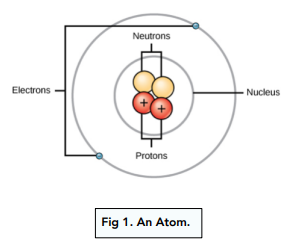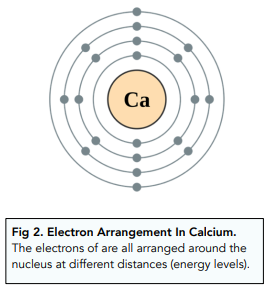Structure of an Atom (GCSE Physics)
Structure of an Atom
Basic Structure
- Atoms are very small. Atoms are the tiny ‘building blocks’ that make up all substances. For exams, you need to know the radius of an atom, which is 1 × 10−¹º metres.
- Atoms are made up of smaller particles. Although atoms are very tiny, they themselves are made up of even smaller particles. These particles are call protons, neutrons and electrons.
- The smaller particles are specifically arranged. Within the atom, the particles are all arranged in specific positions. The protons and neutrons are found at the centre of the atom, called the nucleus. The electrons orbit around the nucleus.

Nucleus
- The nucleus is at the atom’s centre. The nucleus is at the centre of the atom. As previously discussed, the nucleus is made up of neutrons and positively charged protons.
- The nucleus is very small. Compared to the size of the atom, the nucleus is very small. The nucleus is actually less than 1/10 000 of the radius of an atom. This makes the size of the nucleus about 1 × 10-¹⁵ metres.
- The nucleus has a high mass. Most of the mass of the atom is found at the centre, in the nucleus. This is because the nucleus is made up of protons and neutrons. The electrons orbiting around the nucleus have a negligible mass.
Electron Arrangement
- Electrons orbit the nucleus at a distance. Electrons will orbit around the nucleus at different distances. Some electrons will orbit closer to the nucleus than others. The distance at which an electron orbits the nucleus is called an energy level.
- Energy levels vary with distance. Each energy level contains electrons with different amounts of energy. The further away you get from nucleus, higher the energy in that level.
- Electron arrangements may change. Absorbing electromagnetic radiation would cause the electrons to move further from the nucleus, to a higher energy level. Emitting electromagnetic radiation would cause the opposite.

Size and Scale
Order of Magnitude
Since atoms are pretty small, it is easier for us to use standard form when writing their size.
For example, an atom of copper has a diameter of 0.000,000,000,128m.
A much simpler way to write this is, 1.28 x 10⁻¹⁰ m.
We would say the atom has an order of magnitude of 10.





Still got a question? Leave a comment
Leave a comment